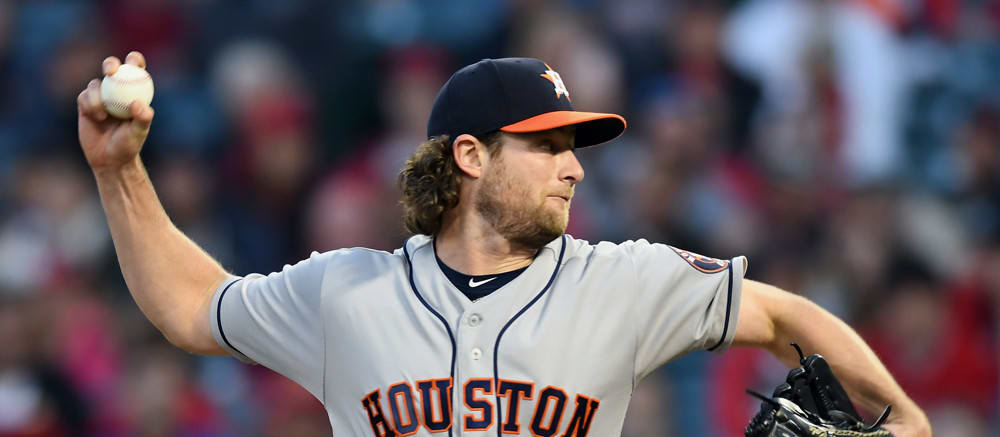This article is part of our MLB Barometer series.
With Edwin Encarnacion's move to the Yankees, trade season is officially upon us. The trade deadline is still a month and a half away, so it may take some time for things to really get going, but that's good news for fantasy players. Correctly adjusting your valuations of players when their circumstances change is one skill, but predicting how players' values will change before their circumstances do is another, higher-level talent. It's considerably more difficult and more likely to backfire, but the surplus value that can be gained if your predictions are correct represents a huge opportunity to differentiate yourself from the rest of your league.
Not all trades improve a player's fantasy value. Closers on bad teams are at the greatest risk to lose value, as they're often only good enough to be setup men on contenders. Shane Greene and Sergio Romo exemplify that archetype. Will Smith and Ken Giles are good enough to close for most teams, but nothing is stopping a team like the Dodgers from acquiring one of them to pitch in front of a top-tier closer like Kenley Jansen. The same could be said for the likes of Sean Doolittle or Kirby Yates should their teams choose to sell. It's entirely possible that all of those players remain in closer situations for the rest of the year, but their value can go down far more than it can go up. It may be worth shopping those arms before trade talks pick up and
With Edwin Encarnacion's move to the Yankees, trade season is officially upon us. The trade deadline is still a month and a half away, so it may take some time for things to really get going, but that's good news for fantasy players. Correctly adjusting your valuations of players when their circumstances change is one skill, but predicting how players' values will change before their circumstances do is another, higher-level talent. It's considerably more difficult and more likely to backfire, but the surplus value that can be gained if your predictions are correct represents a huge opportunity to differentiate yourself from the rest of your league.
Not all trades improve a player's fantasy value. Closers on bad teams are at the greatest risk to lose value, as they're often only good enough to be setup men on contenders. Shane Greene and Sergio Romo exemplify that archetype. Will Smith and Ken Giles are good enough to close for most teams, but nothing is stopping a team like the Dodgers from acquiring one of them to pitch in front of a top-tier closer like Kenley Jansen. The same could be said for the likes of Sean Doolittle or Kirby Yates should their teams choose to sell. It's entirely possible that all of those players remain in closer situations for the rest of the year, but their value can go down far more than it can go up. It may be worth shopping those arms before trade talks pick up and tank their values.
It's easier for a hitter or a starting pitcher to see their values go up after a trade, as they're typically not fighting for just a single role. Starters control more of their own performance, so they're less affected by joining a new team and are generally only worth speculating on if they have a chance to leave a hitter's park for a more favorable one. (Increased chances at wins is a factor, but wins come with a high amount of variance and are very hard to predict over just half a season.) Among the teams at least five games out of a playoff spot already, the Reds and Orioles fit that category, but there aren't many interesting arms likely to move among that group.
As long as they're still good enough to start for a contender, hitters can both take advantage of a friendlier park and better teammates around them to boost their runs and RBIs. Many of the league's struggling teams have neutral parks or pitching parks, so there could be a number of hitters whose values will rise by the time the deadline hits. Considering looking into moves for Blue Jays, Royals, Mariners, Marlins, Pirates and Giants before they're traded if you're looking to speculate on players whose prices could be much higher soon.
RISERS
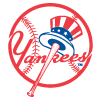 Edwin Encarnacion, 1B, Yankees: What happens when the American League's home run leader moves from a pitchers' park to one of the most homer-friendly parks in the league? We're about to find out. Encarnacion hasn't played in a park like Yankee Stadium since his pre-breakout days in Cincinnati at the start of his career. He should get to enjoy not just his new home but also an upgrade in the talent around him, as his arrival lines up with the returns of Giancarlo Stanton (shoulder) and Aaron Judge (oblique). The 36-year-old had been staving off decline quite well even in Seattle, improving his strikeout and walk rates by more than three points each while improving his barrel rate to a Statcast-era career-high 13.2 percent. Encarnacion should be in for a strong second half in his new home.
Edwin Encarnacion, 1B, Yankees: What happens when the American League's home run leader moves from a pitchers' park to one of the most homer-friendly parks in the league? We're about to find out. Encarnacion hasn't played in a park like Yankee Stadium since his pre-breakout days in Cincinnati at the start of his career. He should get to enjoy not just his new home but also an upgrade in the talent around him, as his arrival lines up with the returns of Giancarlo Stanton (shoulder) and Aaron Judge (oblique). The 36-year-old had been staving off decline quite well even in Seattle, improving his strikeout and walk rates by more than three points each while improving his barrel rate to a Statcast-era career-high 13.2 percent. Encarnacion should be in for a strong second half in his new home.
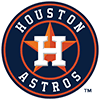 Gerrit Cole, SP, Astros: A few early season duds gave Cole an unimpressive 4.11 ERA and a 4-5 record through his first 11 starts. He's settled into a groove in his last four outings, posting a 2.52 ERA, a 0.76 WHIP and a 40:5 K:BB in 25 innings. A 20.0 percent HR/FB rate has inflated Cole's season ERA to a good, but not great, 3.67 (31st among qualified starters), but there's reason to believe he could end the season at the heart of the "best pitcher in baseball" discussion if that rate regresses. He's already there if you go by xFIP, which estimates a pitcher's deserved ERA using the league's average HR/FB rate; Cole's 2.49 mark in that category is easily the best in the league, with Hyun-Jin Ryu coming in second at 2.86. Cole's career-high 38.8 percent strikeout rate is also best in the league, and his strong 6.1 percent walk rate is his best mark since 2015. The 28-year-old hasn't been particularly homer-prone in his career, so it should be safe to assume his HR/FB rate will regress, bringing his ERA in line with the rest of his elite numbers.
Gerrit Cole, SP, Astros: A few early season duds gave Cole an unimpressive 4.11 ERA and a 4-5 record through his first 11 starts. He's settled into a groove in his last four outings, posting a 2.52 ERA, a 0.76 WHIP and a 40:5 K:BB in 25 innings. A 20.0 percent HR/FB rate has inflated Cole's season ERA to a good, but not great, 3.67 (31st among qualified starters), but there's reason to believe he could end the season at the heart of the "best pitcher in baseball" discussion if that rate regresses. He's already there if you go by xFIP, which estimates a pitcher's deserved ERA using the league's average HR/FB rate; Cole's 2.49 mark in that category is easily the best in the league, with Hyun-Jin Ryu coming in second at 2.86. Cole's career-high 38.8 percent strikeout rate is also best in the league, and his strong 6.1 percent walk rate is his best mark since 2015. The 28-year-old hasn't been particularly homer-prone in his career, so it should be safe to assume his HR/FB rate will regress, bringing his ERA in line with the rest of his elite numbers.
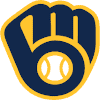 Christian Yelich, OF, Brewers: It's hard to improve your OPS when it is 1.118, as Yelich's did at the end of May. The outfielder has managed to do just that, however, as he's hit in all 13 games in June, posting a ridiculous .472/.532/.906 line with five homers and six steals in that stretch. In his age-27 season, Yelich has done everything he can to prove that last season's MVP campaign wasn't a fluke but rather the start of a transformation into being the best player in baseball not named after a fish. His underlying numbers in 2019 are even better than in his breakout 2018 campaign, supporting the idea that he's simply kept improving. He's trimmed his strikeout rate by 3.5 points (to 17.2 percent), raised his walk rate by more than four points (to 14.7 percent) and raised his barrel rate by more than three points (to 16.1 percent). There's little reason to believe Yelich will be anything other than an MVP candidate the rest of the season.
Christian Yelich, OF, Brewers: It's hard to improve your OPS when it is 1.118, as Yelich's did at the end of May. The outfielder has managed to do just that, however, as he's hit in all 13 games in June, posting a ridiculous .472/.532/.906 line with five homers and six steals in that stretch. In his age-27 season, Yelich has done everything he can to prove that last season's MVP campaign wasn't a fluke but rather the start of a transformation into being the best player in baseball not named after a fish. His underlying numbers in 2019 are even better than in his breakout 2018 campaign, supporting the idea that he's simply kept improving. He's trimmed his strikeout rate by 3.5 points (to 17.2 percent), raised his walk rate by more than four points (to 14.7 percent) and raised his barrel rate by more than three points (to 16.1 percent). There's little reason to believe Yelich will be anything other than an MVP candidate the rest of the season.
 Garrett Cooper, 1B/OF, Marlins: Things are far less exciting in Yelich's former home down in Miami, but Cooper may have finally emerged from a pile of similarly boring hitters to become a competent, above-average bat. Cooper's .306/.384/.488 slash line through 34 games this season maybe hard to trust from a 28-year-old who had all of 27 games at the big-league level under his belt prior to this season, but there are reasons to buy in at least partially. He may be a legitimate late bloomer, though that might not be an accurate term, as he'd hit a strong .330/.392/.564 in 500 plate appearances at the Triple-A level. Statcast buys what he's done, giving him a .309 expected batting average and a .510 expected slugging percentage on the back of a strong 45.7 percent hard-hit rate. Don't expect fireworks, and don't expect durability, as injuries limited him to 30 games last year and have already sent him to the injured list twice this season, but a healthy Cooper certainly seems to be worth a low-level investment.
Garrett Cooper, 1B/OF, Marlins: Things are far less exciting in Yelich's former home down in Miami, but Cooper may have finally emerged from a pile of similarly boring hitters to become a competent, above-average bat. Cooper's .306/.384/.488 slash line through 34 games this season maybe hard to trust from a 28-year-old who had all of 27 games at the big-league level under his belt prior to this season, but there are reasons to buy in at least partially. He may be a legitimate late bloomer, though that might not be an accurate term, as he'd hit a strong .330/.392/.564 in 500 plate appearances at the Triple-A level. Statcast buys what he's done, giving him a .309 expected batting average and a .510 expected slugging percentage on the back of a strong 45.7 percent hard-hit rate. Don't expect fireworks, and don't expect durability, as injuries limited him to 30 games last year and have already sent him to the injured list twice this season, but a healthy Cooper certainly seems to be worth a low-level investment.
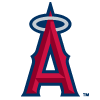 Shohei Ohtani, DH, Angels: Ohtani understandably needed a bit of time to round into form following Tommy John surgery, as he hit a disappointing .225/.304/.326 in his first 22 games of the season. Over the last 12 games, however, he's been incredible, posting a .386/.449/.818 line with five homers and becoming the first Japanese-born player to hit for the cycle in MLB history. While it's unlikely Ohtani will stay quite this hot the rest of the way, it's certainly believable that being in the lineup every day will lead to him taking a step forward at the plate now that he's back in rhythm, and it would hardly be surprising to see a player this talented improve in his age-24 season. His exit velocity has improved by a hair to 92.9 mph, and his hard-hit rate has remained strong at 46.9 percent. His launch angle has strangely collapsed to just 2.5 degrees after sitting at 12.3 degrees last season, but that opens up a clear avenue for improved power as Ohtani puts his surgery further in the rearview mirror.
Shohei Ohtani, DH, Angels: Ohtani understandably needed a bit of time to round into form following Tommy John surgery, as he hit a disappointing .225/.304/.326 in his first 22 games of the season. Over the last 12 games, however, he's been incredible, posting a .386/.449/.818 line with five homers and becoming the first Japanese-born player to hit for the cycle in MLB history. While it's unlikely Ohtani will stay quite this hot the rest of the way, it's certainly believable that being in the lineup every day will lead to him taking a step forward at the plate now that he's back in rhythm, and it would hardly be surprising to see a player this talented improve in his age-24 season. His exit velocity has improved by a hair to 92.9 mph, and his hard-hit rate has remained strong at 46.9 percent. His launch angle has strangely collapsed to just 2.5 degrees after sitting at 12.3 degrees last season, but that opens up a clear avenue for improved power as Ohtani puts his surgery further in the rearview mirror.
FALLERS
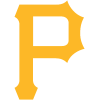 Chris Archer, SP, Pirates: If it's not obvious to everyone by now that the Rays are a smart organization, Archer is doing his best to cement that reputation this season. Archer hasn't been an elite arm in a while, as he hasn't recorded an ERA less than 4.00 since 2015, but his 5.85 ERA through 12 starts this season certainly comes as a surprise. He's lost a couple ticks on his fastball, which now comes in at 93.7 mph after 95.5 mph two seasons ago. His strikeout rate has fallen along with his velocity, as he now strikes out an unremarkable 23.9 percent of batters after peaking at 29.2 percent in 2017. His walk rate has jumped from 7.7 percent last year to 11.4 percent this year, and hitters are making far better contact when they're not being handed free passes, recording a 12.9 percent barrel rate (up from 6.4 percent last season). That barrel rate makes it hard to believe Archer's 23.0 percent HR/FB rate will regress to the mean, but even if it does, an ERA in the range of his 4.84 xFIP (which estimates a pitcher's ERA using a league-average HR/FB Rate) would hardly excite fantasy owners.
Chris Archer, SP, Pirates: If it's not obvious to everyone by now that the Rays are a smart organization, Archer is doing his best to cement that reputation this season. Archer hasn't been an elite arm in a while, as he hasn't recorded an ERA less than 4.00 since 2015, but his 5.85 ERA through 12 starts this season certainly comes as a surprise. He's lost a couple ticks on his fastball, which now comes in at 93.7 mph after 95.5 mph two seasons ago. His strikeout rate has fallen along with his velocity, as he now strikes out an unremarkable 23.9 percent of batters after peaking at 29.2 percent in 2017. His walk rate has jumped from 7.7 percent last year to 11.4 percent this year, and hitters are making far better contact when they're not being handed free passes, recording a 12.9 percent barrel rate (up from 6.4 percent last season). That barrel rate makes it hard to believe Archer's 23.0 percent HR/FB rate will regress to the mean, but even if it does, an ERA in the range of his 4.84 xFIP (which estimates a pitcher's ERA using a league-average HR/FB Rate) would hardly excite fantasy owners.
 Paul Goldschmidt, 1B, Cardinals: Something doesn't appear to be right with Goldschmidt. After recording a wRC+ of 133 or higher for seven consecutive seasons, the first baseman has a modest 110 this year, earned on the back of a decent but unremarkable .262/.353/.433 slash line. He hit nine homers in his first 22 games in a Cardinals uniform but has managed just four in his last 48 games and has added only four doubles during that stretch. He's also lost the speed that once differentiated him from other first baseman, as he's yet to steal a base after averaging more than 17 steals in the last seven seasons. The 32-year-old's Statcast numbers are mostly down just moderately across the board, though his barrel rate has fallen all the way from 13.6 percent to 8.5 percent, likely explaining his loss of power as well as the 43-point drop in his BABIP (down to a still strong .316). The veteran can still do a capable enough job at the plate and isn't single-handedly killing fantasy owners, but his value has certainly dropped and he seems unlikely to wind up as a good return on investment.
Paul Goldschmidt, 1B, Cardinals: Something doesn't appear to be right with Goldschmidt. After recording a wRC+ of 133 or higher for seven consecutive seasons, the first baseman has a modest 110 this year, earned on the back of a decent but unremarkable .262/.353/.433 slash line. He hit nine homers in his first 22 games in a Cardinals uniform but has managed just four in his last 48 games and has added only four doubles during that stretch. He's also lost the speed that once differentiated him from other first baseman, as he's yet to steal a base after averaging more than 17 steals in the last seven seasons. The 32-year-old's Statcast numbers are mostly down just moderately across the board, though his barrel rate has fallen all the way from 13.6 percent to 8.5 percent, likely explaining his loss of power as well as the 43-point drop in his BABIP (down to a still strong .316). The veteran can still do a capable enough job at the plate and isn't single-handedly killing fantasy owners, but his value has certainly dropped and he seems unlikely to wind up as a good return on investment.
 Adalberto Mondesi, SS, Royals: Fantasy owners drafted Mondesi primarily for his speed, and he's certainly produced in that category. With a modest .605 OPS in his last 17 games and just a .649 mark over his last 33, it's not clear that he'll do a whole lot more than that, however. His 14 homers in 75 games last season now looks like a bit of a fluke, as he has just six in 69 games this year, on pace for 13.7. Mondesi's plate discipline remains unimpressive (a 26.9 percent strikeout rate and a 5.2 percent walk rate), and his quality of contact isn't great either. Statcast gives him a .244 expected batting average and a .394 expected slugging percentage, numbers which he should be able to outperform due to his excellent speed, but only by so much. Mondesi is still a perfectly fine player, and at age 23, there's plenty of room for growth, but the baseline expectation for Mondesi at this point should be a ton of steals with merely decent production in other categories, with anything more than that considered a bonus.
Adalberto Mondesi, SS, Royals: Fantasy owners drafted Mondesi primarily for his speed, and he's certainly produced in that category. With a modest .605 OPS in his last 17 games and just a .649 mark over his last 33, it's not clear that he'll do a whole lot more than that, however. His 14 homers in 75 games last season now looks like a bit of a fluke, as he has just six in 69 games this year, on pace for 13.7. Mondesi's plate discipline remains unimpressive (a 26.9 percent strikeout rate and a 5.2 percent walk rate), and his quality of contact isn't great either. Statcast gives him a .244 expected batting average and a .394 expected slugging percentage, numbers which he should be able to outperform due to his excellent speed, but only by so much. Mondesi is still a perfectly fine player, and at age 23, there's plenty of room for growth, but the baseline expectation for Mondesi at this point should be a ton of steals with merely decent production in other categories, with anything more than that considered a bonus.
 Lorenzo Cain, OF, Brewers: Unlike his MVP-winning teammate, Cain has not continued to trend in the right direction in his second season in Milwaukee (technically his third, as he spent some time there in his debut campaign in 2010). After posting an excellent .308/.395/.417 line last season, he's seen his numbers collapse across the board to .248/.305/.360 this year. He's been particularly poor lately, posting a .458 OPS in his last 20 games. Cain's batted-ball data accounts for some of the change, as his exit velocity has fallen from 89.1 mph to 87.7 mph, but he's also seen his strikeout rate rise from 15.2 percent to 17.0 percent while his walk rate has collapsed from 11.5 percent to 6.9 percent. The veteran's expected batting average suggests a more moderate decline, as it is .269 after coming in at .289 last season, so some positive regression can be expected, but it's not terribly surprising to see him taking a step back in his age-33 season.
Lorenzo Cain, OF, Brewers: Unlike his MVP-winning teammate, Cain has not continued to trend in the right direction in his second season in Milwaukee (technically his third, as he spent some time there in his debut campaign in 2010). After posting an excellent .308/.395/.417 line last season, he's seen his numbers collapse across the board to .248/.305/.360 this year. He's been particularly poor lately, posting a .458 OPS in his last 20 games. Cain's batted-ball data accounts for some of the change, as his exit velocity has fallen from 89.1 mph to 87.7 mph, but he's also seen his strikeout rate rise from 15.2 percent to 17.0 percent while his walk rate has collapsed from 11.5 percent to 6.9 percent. The veteran's expected batting average suggests a more moderate decline, as it is .269 after coming in at .289 last season, so some positive regression can be expected, but it's not terribly surprising to see him taking a step back in his age-33 season.
 Jake Arrieta, SP, Phillies: Arrieta has been an interesting test of the ERA estimators for a few years now. Despite his ERA rising in each of the last three seasons, he's outperformed his FIP by at least 0.30 runs each year, as the movement of his pitches has seemingly allowed him to avoid hard contact and keep his ERA in check while his strikeout rate continues to fall. He's beating his FIP again this season, but there's nothing particularly exciting about his 4.31 ERA. The 33-year-old's supporting stats are down across the board, as we might expect for a pitcher his age. His 18.9 percent strikeout rate and 9.7 percent walk rate are each his worst figures since 2013, while his 38.3 percent hard-hit rate is easily the worst mark of his career. The veteran's 7.47 ERA, 2.11 WHIP and 11:10 K:BB over his last three starts may be a sign of things to come, and his 5.04 FIP on the season doesn't suggest that things are about to get better.
Jake Arrieta, SP, Phillies: Arrieta has been an interesting test of the ERA estimators for a few years now. Despite his ERA rising in each of the last three seasons, he's outperformed his FIP by at least 0.30 runs each year, as the movement of his pitches has seemingly allowed him to avoid hard contact and keep his ERA in check while his strikeout rate continues to fall. He's beating his FIP again this season, but there's nothing particularly exciting about his 4.31 ERA. The 33-year-old's supporting stats are down across the board, as we might expect for a pitcher his age. His 18.9 percent strikeout rate and 9.7 percent walk rate are each his worst figures since 2013, while his 38.3 percent hard-hit rate is easily the worst mark of his career. The veteran's 7.47 ERA, 2.11 WHIP and 11:10 K:BB over his last three starts may be a sign of things to come, and his 5.04 FIP on the season doesn't suggest that things are about to get better.

